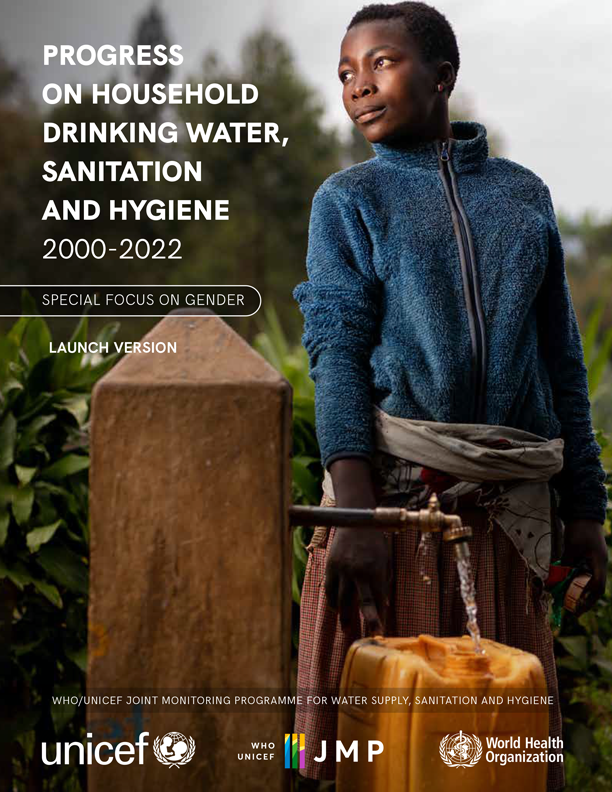WHO/UNICEF Joint Monitoring Program for Water Supply, Sanitation and Hygiene (JMP) – Progress on household drinking water, sanitation and hygiene 2000-2022: Special focus on gender


New data from the World Health Organization (WHO) and United Nations Children’s Fund (UNESCO) shows continuing stark inequalities in access to water, sanitation and hygiene (WASH), with a heavy burden falling on women and girls.
The WHO/UNICEF Joint Monitoring Program (JMP) 2023 update report, Progress on household drinking water, sanitation and hygiene 2000-2022: Special focus on gender, compiles data on global progress towards achieving universal access to safe drinking water, sanitation and hygiene (WASH). It also provides an in-depth analysis of gender inequalities between and within countries, revealing the unique risks that women and girls face from inadequate access to safe WASH.
Key facts from the new report:
- Water: In 2022, 2.2 billion still lacked safely managed drinking water, including 115 million people drinking surface water.
- Sanitation: In 2022, 3.5 billion people still lacked safely managed sanitation, including 419 million who practised open defecation.
- Hygiene: In 2022, 2 billion still lacked basic hygiene services, including 653 million with no facility at all.
- Menstrual health: Adolescent girls and women living in rural areas are more likely to use reusable materials, or no materials at all, to manage menstruation.
- Gender: 1.8 billion people still do not have drinking water on-premises, and in two out of three households, women are primarily responsible for water collection.
Achieving universal coverage by 2030 will require a six-fold increase in current rates of progress for safely managed drinking water, a five-fold increase for safely managed sanitation, and a three-fold increase for basic hygiene services.
The JMP website, www.washdata.org, allows visitors to interactively access the full dataset, and download individual country files which include all of the data used to produce the estimates.
UN-Water Publications
UN-Water’s publications can be divided into two main groups: the publications that represent all Members and Partners of UN-Water – the collective products – and the publications that are under the UN-Water umbrella but produced by groups or individual UN-Water Members and/or Partners – the related products.
Related Links
Related Publications
- WHO/UNICEF Joint Monitoring Program for Water Supply and Sanitation (JMP) – 2015 Update Read more
- WHO/UNICEF Joint Monitoring Program for Water Supply and Sanitation (JMP) – 2014 Update Read more
- WHO/UNICEF Joint Monitoring Programme for Water Supply and Sanitation (JMP) – 2013 Update Read more
- WHO/UNICEF Joint Monitoring Programme for Water Supply and Sanitation (JMP) – Progress on household drinking water, sanitation and hygiene 2000 - 2020 Read more

